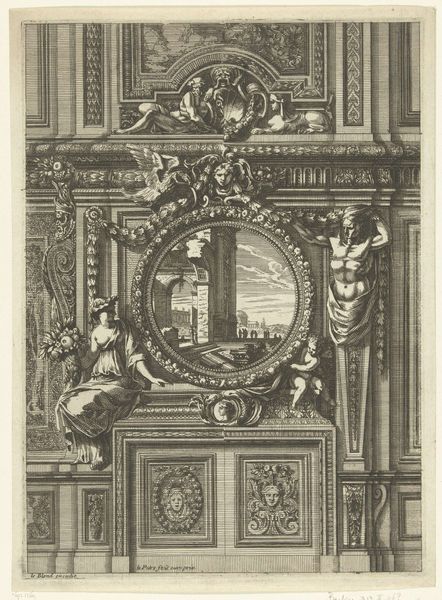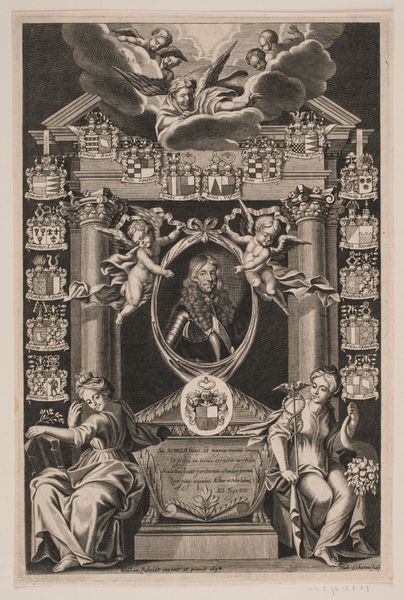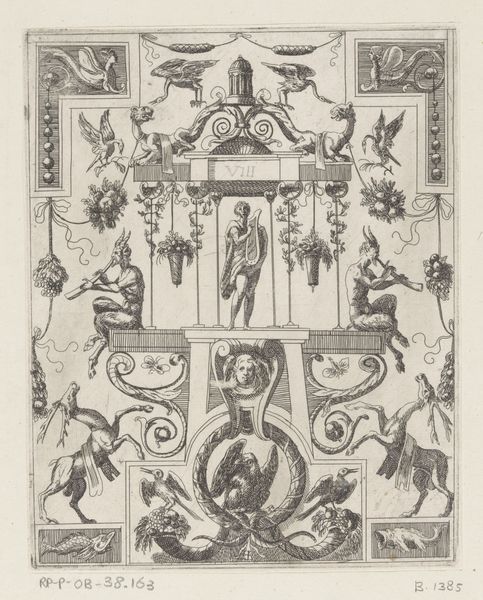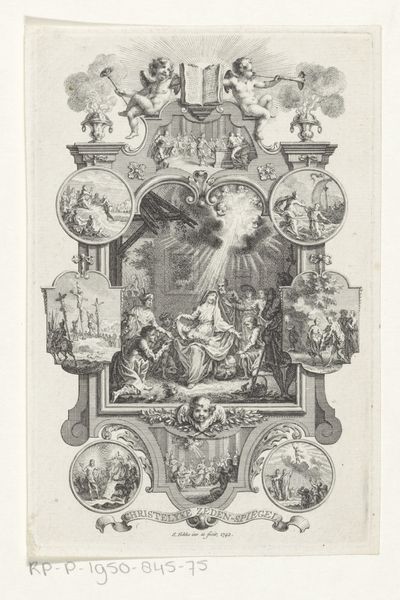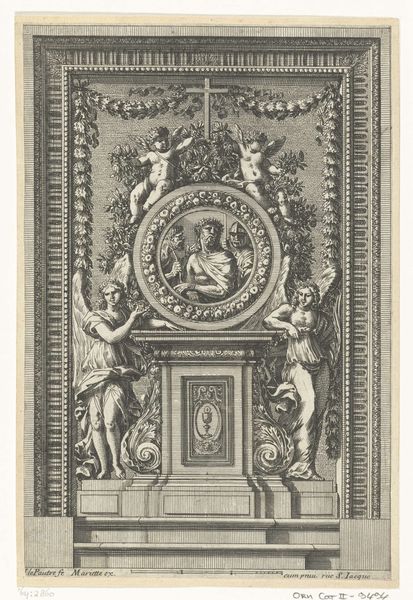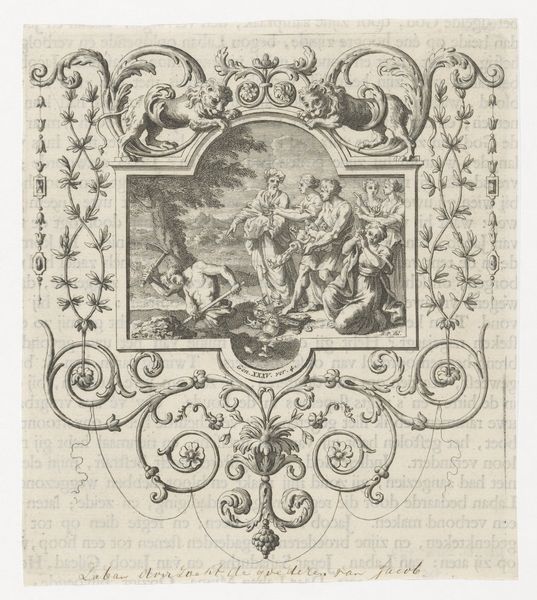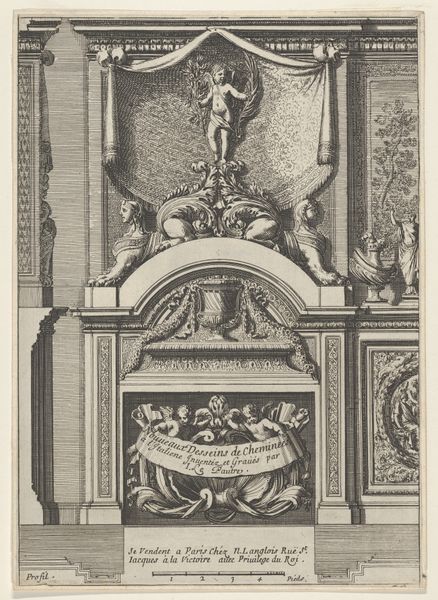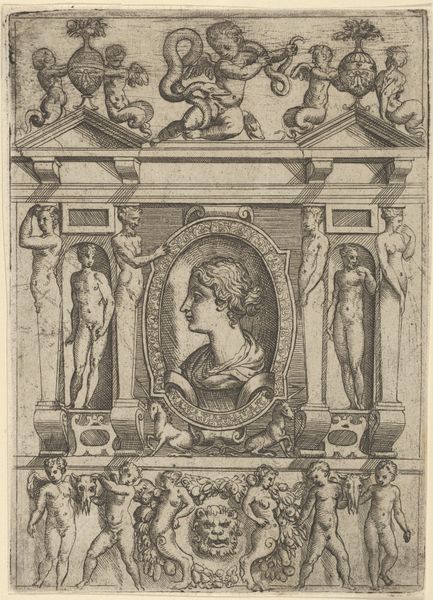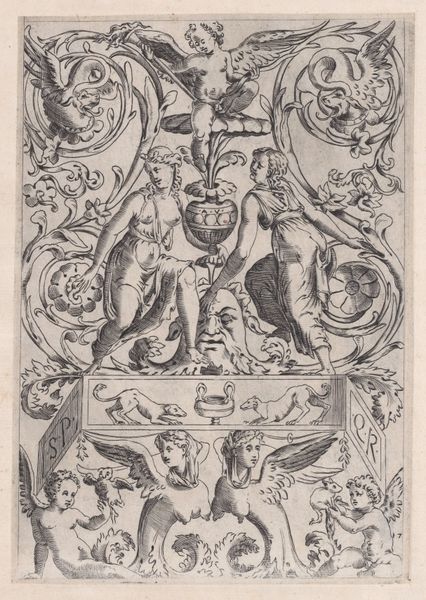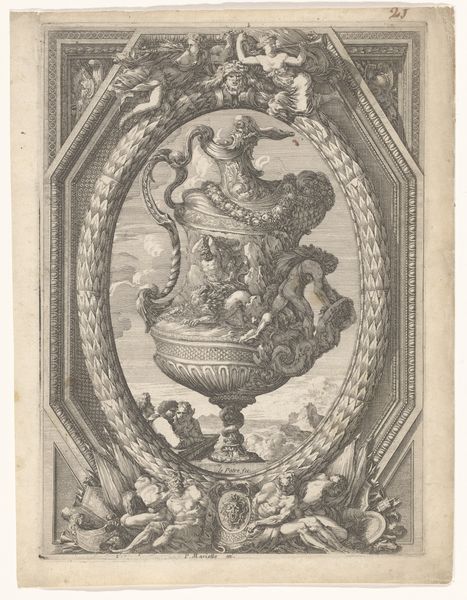
Chimney with a Bacchanal over the Mantle from 'Grandes Cheminée' 1644 - 1666
0:00
0:00
drawing, print, engraving
#
drawing
#
allegory
#
baroque
# print
#
figuration
#
history-painting
#
engraving
Dimensions: Sheet: 10 15/16 × 8 7/16 in. (27.8 × 21.5 cm) [cropped partly within plate mark]
Copyright: Public Domain
Curator: This engraving by Jean Le Pautre, dating from between 1644 and 1666, depicts a chimney with a Bacchanal scene over the mantle. It's part of a series titled "Grandes Cheminées" and is currently held at the Metropolitan Museum of Art. Editor: Oh, my goodness. It’s…ornate. Intensely so. I feel a little overwhelmed, but in a way that makes me think of rich, velvety drapes and candlelight. There's definitely a sense of lavish excess here. Curator: The Bacchanal itself—that riotous scene in the center—is rich in classical imagery and symbolism. Bacchus, the god of wine and revelry, is central. The surrounding figures evoke a world of abandon. Le Pautre used these images to suggest wealth, cultivation, and knowledge of the classics. Editor: I see the revelry. But there’s something about the precision of the engraving combined with the sheer chaotic energy of the Bacchanal that's amusing. It's like trying to contain Dionysus within the confines of very strict social rules! Is that contrast deliberate, do you think? Curator: I do. It was very common during the Baroque to contain extreme pathos or wild displays within tight frame. The architectural details around the scene amplify this sense. Each element—the cherubs, the masks, the foliage—is meticulously rendered and placed to evoke balance and symmetry. All this suggests the power of human reason and order. Editor: I also see hints of mortality even amongst this display. There is something somber hidden underneath all the hedonism. A tension of life's finitude that underscores our brief moments of indulgence, what do you make of it? Curator: Indeed. The transience of life's pleasures was a very popular theme at the time. These are luxurious aspirations which remain, nonetheless, dust and ashes, represented also by the very element these fireplaces are supposed to keep alive: fire. It is no accident, for the artist, I'd wager. Editor: Ah, it's a gorgeous and complex statement, all wrapped up in a picture of a fireplace. Looking at it, I'm strangely content. Curator: Yes. Le Pautre offers not just a design, but an allegory about the human condition, delivered through beauty.
Comments
No comments
Be the first to comment and join the conversation on the ultimate creative platform.
